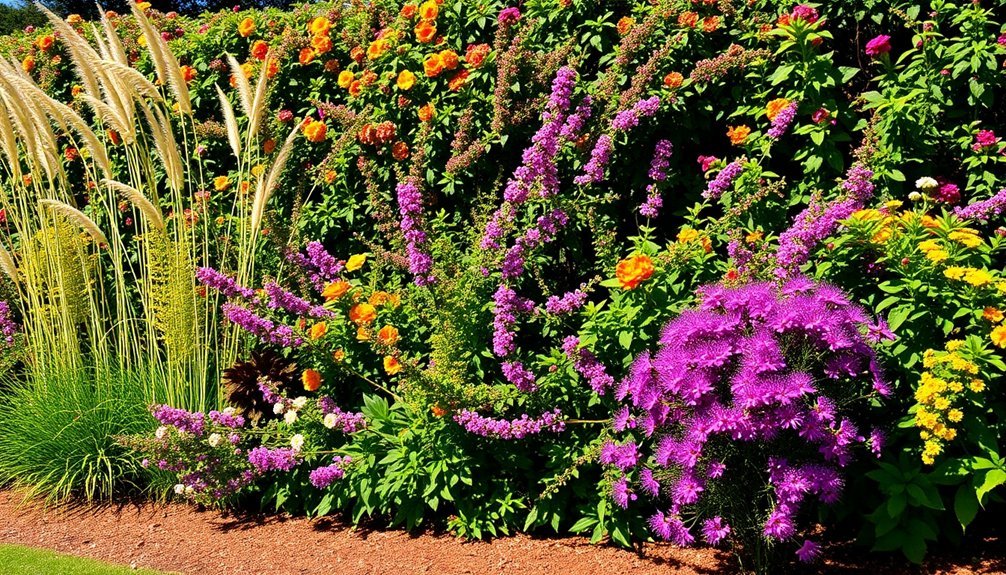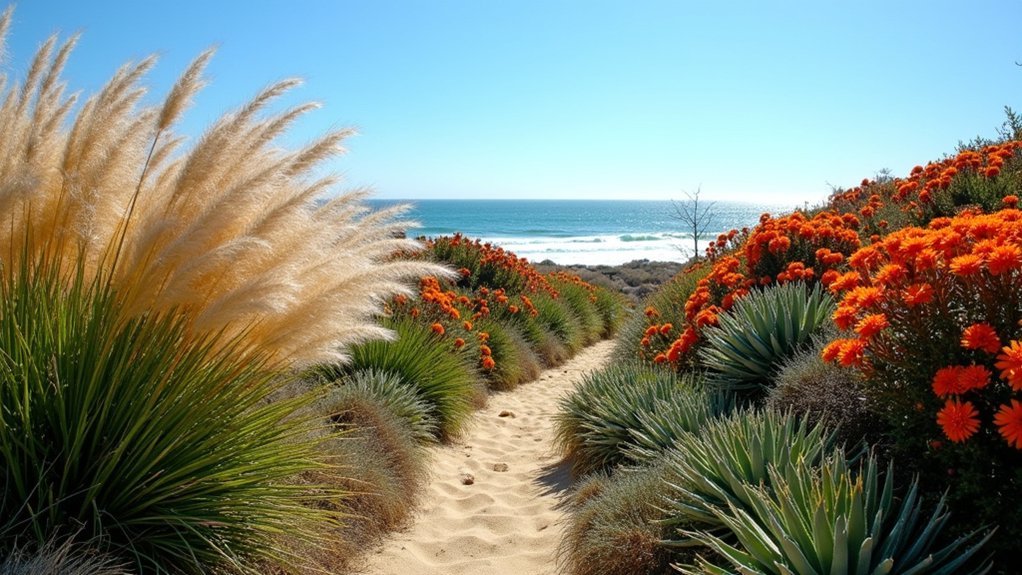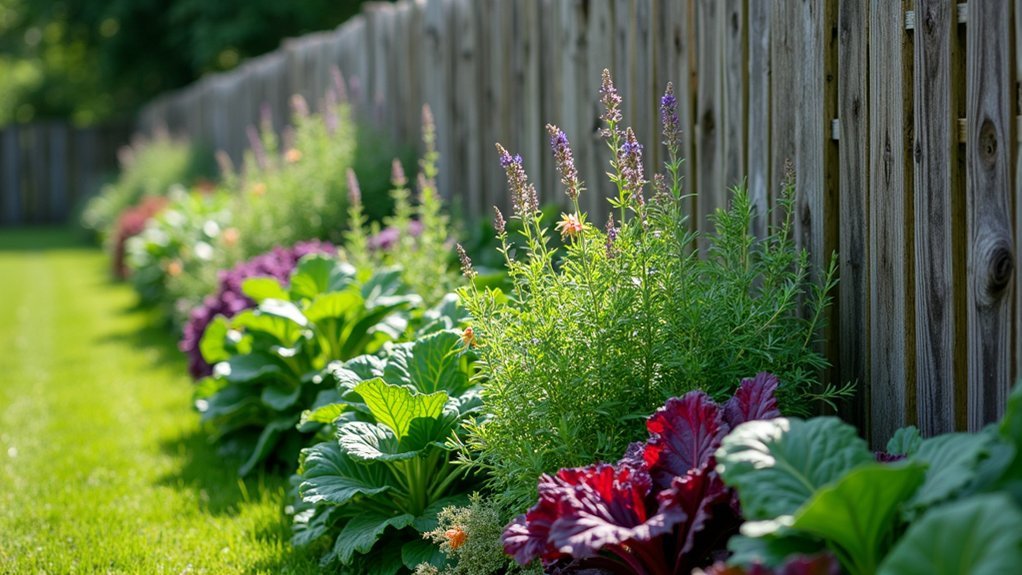The three best mixed native hedge building methods are the Double-Row Zigzag Technique (planting six specimens per meter in staggered rows for maximum density), the Layered Planting Method (positioning taller species behind shorter ones for ecological depth), and the Succession Planting Approach (combining fast and slow-growing species for year-round interest). For best results, prepare a 60-90cm strip, plant during dormancy (late autumn to early spring), and apply a 7cm mulch layer. These techniques create living boundaries that serve both landscaping and wildlife needs.
The Double-Row Zigzag Technique for Maximum Density

Density defines the effectiveness of a native hedge. To achieve ideal thickness, the double-row zigzag technique arranges plants in a staggered pattern across two rows.
Select native species like English oak, beech, alder, and blackthorn for biodiversity. Plant six specimens per meter, spacing them 50cm apart within rows and 40-45cm between rows. This close proximity encourages upward growth and creates denser foliage. This arrangement provides superior wind protection and better sound insulation compared to single-row planting.
Position your hedge 75cm-1m from boundaries to allow full development. Before planting, prepare the ground by rotavating a 60-90cm strip to remove vegetation. Keep roots moist during the process and verify the root flare sits level with the soil surface when planting.
After installation, apply a 7cm mulch layer (keeping it away from trunks) and implement regular pruning to enhance density.
Layered Planting Method for Biodiversity and Resilience
Many successful native hedges rely on strategic layering techniques to maximize ecological benefits.
You'll want to select native species suited to your local conditions, incorporating flowering shrubs like Hawthorn alongside textural plants such as Hazel and Field Maple.
When planting, position taller species at the back and lower-growing ones in front, arranging them in a staggered pattern to create depth and density.
This approach not only creates visual interest but greatly enhances biodiversity by providing varied habitats for wildlife.
Prepare your soil thoroughly by testing pH, enriching with compost, and ensuring proper drainage.
The optimal time to plant your hedge is during the dormant season between late autumn and early spring when plants establish roots most effectively.
Annual pruning will maintain the hedge's structure while promoting new growth.
Your layered hedge will serve as a wildlife haven, connecting habitats while offering protection from wind and noise – a resilient addition to your landscape.
The Succession Planting Approach for Year-Round Coverage

While layered planting creates spatial diversity in your hedge, succession planting focuses on temporal diversity. By selecting native species that flower, fruit, or display foliage at different times, you'll guarantee your hedge remains visually appealing and ecologically valuable throughout the seasons.
Start by mapping out your climate zone's growing calendar and choose plants with staggered growth cycles. Fast-growing species can establish quickly while slower varieties develop. For example, plant early-flowering shrubs alongside those that produce fall berries. Creating a detailed master spreadsheet will help you track flowering times and maintenance needs for each hedge species.
Orchestrate your hedge planting like a symphony, with each species making its entrance precisely when another exits the seasonal stage.
This approach not only maintains continuous habitat for wildlife but also reduces pest problems through natural diversity. You'll extend harvest periods if incorporating edibles, and empty spaces won't persist long enough for weeds to establish.
Remember to rotate species when replacing plants to preserve soil health and prevent nutrient depletion.
Frequently Asked Questions
How Often Should Mixed Native Hedges Be Watered During Drought Conditions?
You should water established native hedges deeply once a month during drought conditions. If you notice wilting or yellowing leaves, water immediately. Remember, they need only about 30% of the water non-natives require.
Can Mixed Native Hedges Effectively Block Noise From Nearby Roads?
Yes, you'll find mixed native hedges can reduce road noise by up to 10 decibels, but they need to be at least 25 feet thick with dense foliage reaching to the ground for effective sound absorption.
What's the Best Time of Year to Establish a New Hedge?
You'll have the most success planting your new hedge between November and April during the dormant season. This timing reduces transplant shock, though potted varieties can be planted year-round if you're enthusiastic to start.
How Do I Manage Invasive Species Infiltrating My Native Hedge?
You'll need to regularly monitor your hedge, hand-pull young invasives, cut larger ones at the base, apply targeted herbicides when necessary, and maintain dense native plantings to prevent new invasive establishment through competition.
Are There Grants Available for Planting Native Hedgerows on Agricultural Land?
Yes, you'll find funding through USDA NRCS programs like EQIP and CSP, state-specific grants in Washington and California, plus local conservation district support. International options include UK's Countryside Stewardship and European agricultural schemes.
In Summary
You've now mastered three powerful native hedge techniques: the double-row zigzag for density, layered planting for biodiversity, and succession planting for year-round interest. Each method offers unique benefits for your landscape while supporting local wildlife. Choose the approach that best fits your space and goals, or combine elements from each method. Your native hedge will reward you with beauty, privacy, and ecological value for years to come.





Leave a Reply